Sordid Tales and Scandals at Passport Places
It’s no secret that history isn’t squeaky-clean. Kings beheaded their wives (looking at you Henry VIII…), artists pushed the envelope, and in 1904 the winner of the Olympic marathon actually rode in a car for half the race. Canada’s historic places are no exception, and our historic places continue to tell the story of scandals that shaped our country. From illicit stamps to patent medicine, Passport Places are eager to share their tales with you!
Charles Connell’s 5-cent Stamp – Connell House, Woodstock, NB
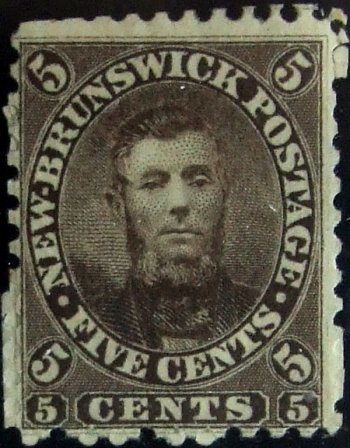
Connell Stamp
Photo: Carleton County Historical Society
We are used to seeing various faces and places on our stamps today, like author Margaret Atwood, singer Stompin’ Tom Connors, and humanitarian and athlete Terry Fox. This wasn’t always the case, however, and in 1860 the only portraits on stamps were those of monarchs. At least until the then-postmaster general of New Brunswick, Charles Connell, decided he deserved to be immortalized via stamp. This, of course, caused scandal and resulted in his resignation. Though the stamps were withdrawn and the sheets destroyed, some supposedly still circulate among collectors today, and are extremely rare and prized.
View Charles Connell’s home for yourself and explore its architectural gems and exhibits. More information can be found on their website: https://www.cchsnb.ca/index.php/home-example-3-5/
The Dryden Buck – Dryden & District Museum, Dryden, ON

The Dryden Buck
Photo: Dryden & District Museum
Dryden is a favorite destination for hunters across North America, celebrated for its history of producing impressive bucks. The Dryden Buck, which is displayed in the main stairwell of the museum, was illegally shot at night just north of Dryden in 2003. The buck wasn’t scored, as it was held by police as evidence while the Ontario courts convicted the hunter of night hunting, trespassing, and abandonment of meat. In 2016, the buck was scored at 194 2/8 typical white-tailed deer, making it a new official Ontario record. It is displayed at the Dryden & District Museum as a reminder to respect wildlife laws.
See the buck for yourself and learn more about Dryden’s local history by visiting the musuem. More informaiton can be found on their website. https://www.dryden.ca/en/explore/museum.aspx
Dr. Williams’ Pink Pills for Pale People – Fulford Place, Brockville, ON
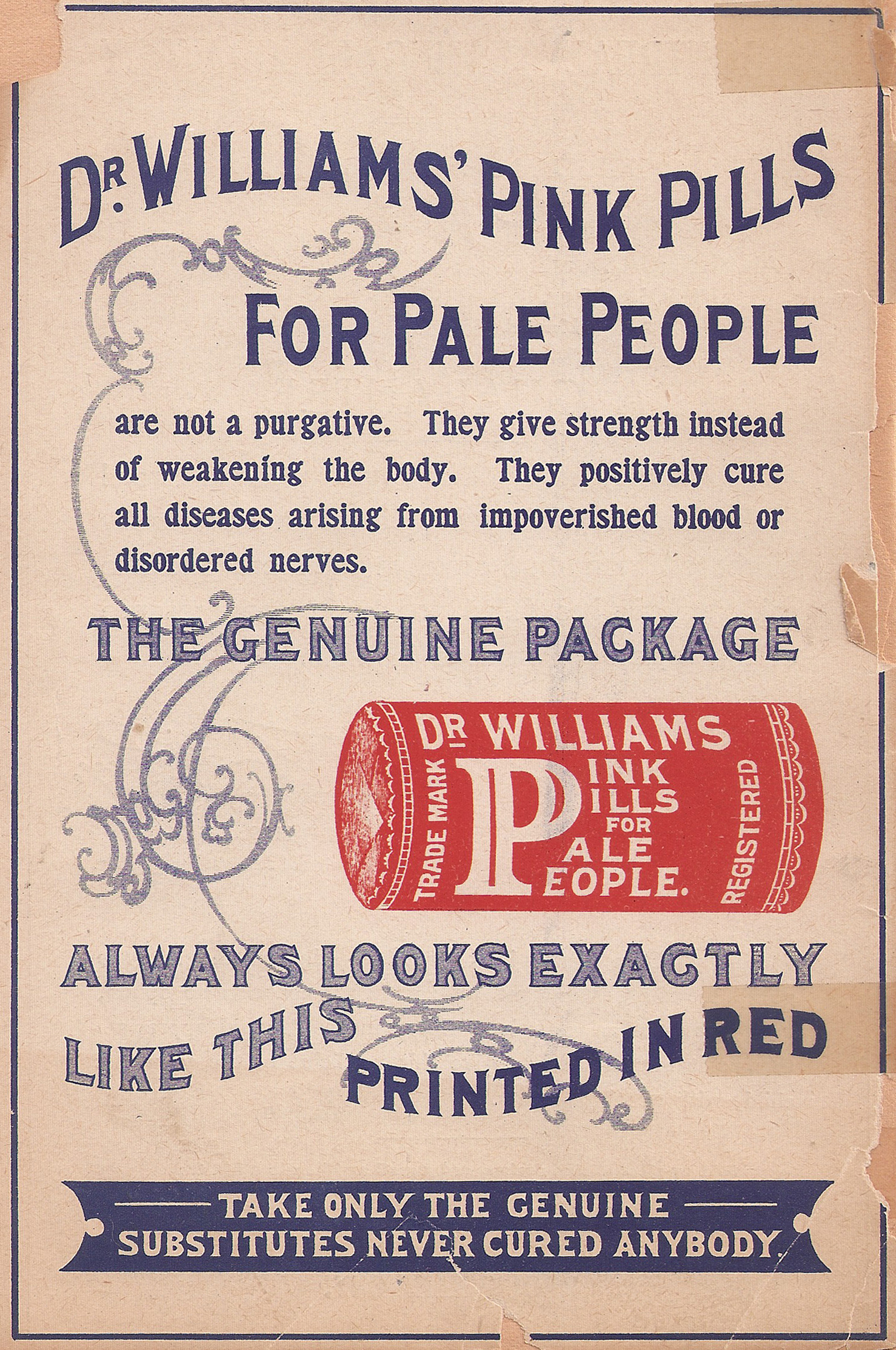
Photo: Fulford Place Museum Archives
The past was a peculiar and risky time to fall ill. Doctors would prescribe chloroform and cigarettes as a cure for asthma, alcohol for teething and diarrhea in infants, smoke enemas for cholera, and leeches for earaches. Not only this, but it was a time when patent medicines were booming. Dr. Williams’ Pink Pills for Pale People were an iron supplement that consisted only of iron, sugar, corn starch, and red dye which claimed to cure many ailments, such as chorea (an involuntary movement disorder), locomotor ataxia, anaemia (described as “too little blood”), nervous headaches, rheumatism, heart palpitations, all forms of weakness in males or females, and – as the name suggests – a pale or sallow complexion. G.T. Fulford purchased the rights to the pills in 1890 from Doctor William Jackson and made millions from the medicine. His Edwardian mansion, constructed between 1899 and 1901, is now a museum dedicated to the life and career of Fulford and a community hub for local arts events.
Learn more about Fulford Place and plan your visit via the Ontario Heritage Trust: https://www.heritagetrust.on.ca/properties/fulford-place
An Unsolved Assassination – Kettle Valley Steam Railway, Summerland, BC
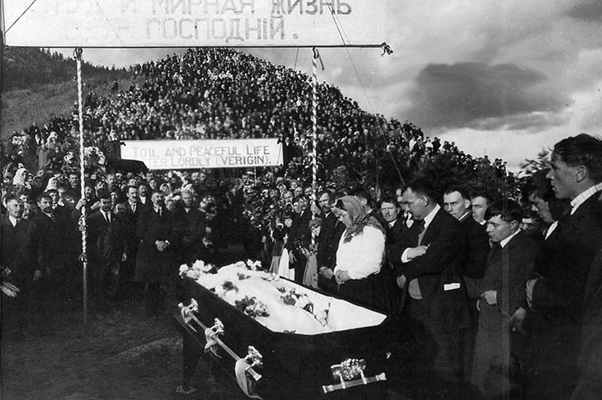
The funeral of Verigen was attended by about 7,000 people.
Photo: Simon Fraser University Library
A 100-year-old cold case, the assassination of Doukhobor spiritual leader Peter Verigen, is one of Canada’s true crime mysteries. Verigen, travelling via rail from Briliant, BC, to Grand Forks, was killed in an explosion on the Kettle Valley Railway. Out of the 21 passengers, all but two were killed or injured in the explosion, and Peter Verigen’s body was found nearly 20 metres from the car. Theories abound, though none have been proven, and the assassination remains a mystery.
To engage in a railway scandal yourself, you can step aboard the Great Train Robbery & BBQ at Kettle Valley Steam Railway, with all “robbed” funds being donated to charity. https://www.kettlevalleyrail.org/
Witch Trials – Huron Historic Gaol, Goderich, ON
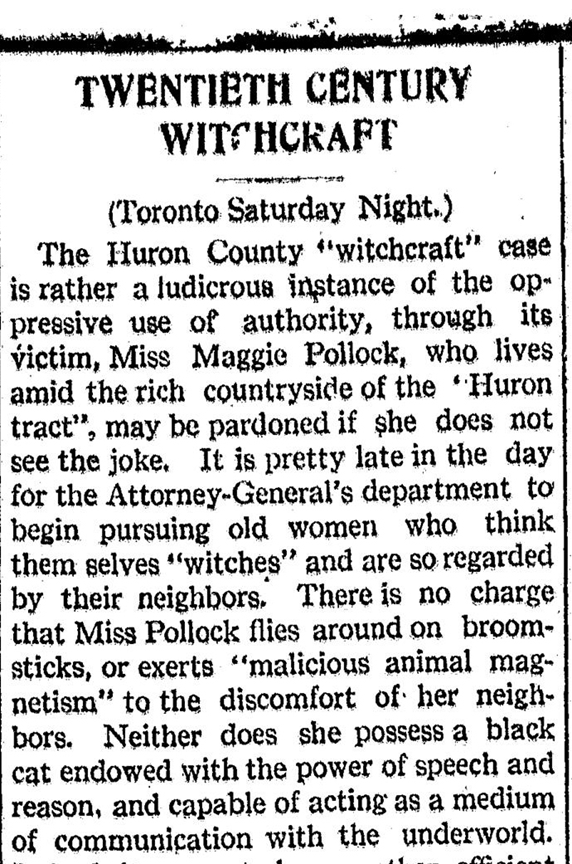
Screenshot of The Wingham Advance 1920-04-29, pg 5, reprinting an article from Toronto Saturday Night in that issue.
Photo: This newspaper is hosted online as part of the County of Huron’s digitized newspaper collection. Digitized Newspapers | Huron County Museum
Criminals, murderers, and robbers weren’t the only ones held at the Huron County Gaol. In the 1920s, almost 200 years after the famous Salem Witch Trials, Maggie Pollock was accused of witchcraft and brought to the Gaol. What’s interesting about Pollock’s case, however, is that she was not in trouble for actually being a witch. See, witchcraft itself wasn’t illegal in Canada, as outlawing it would be an admission that witchcraft was real. Rather, pretending to be a witch was against the law. The trial made Pollock something of a celebrity, and though she was found guilty she would go on to appeal the verdict at Osgoode Hall in Toronto. Later in life, she did not cease using her witchy gifts and used them to help others. She even helped the police locate escaped murderers from London Jail!
You can read more about this witchy trial on the Huron County Museum blog here.
Learn more tales from the gaol by visiting for yourself. More information can be found on their website. https://www.huroncountymuseum.ca/huron-historic-gaol/
Aux Trois Couvents, Château-Richer, QC
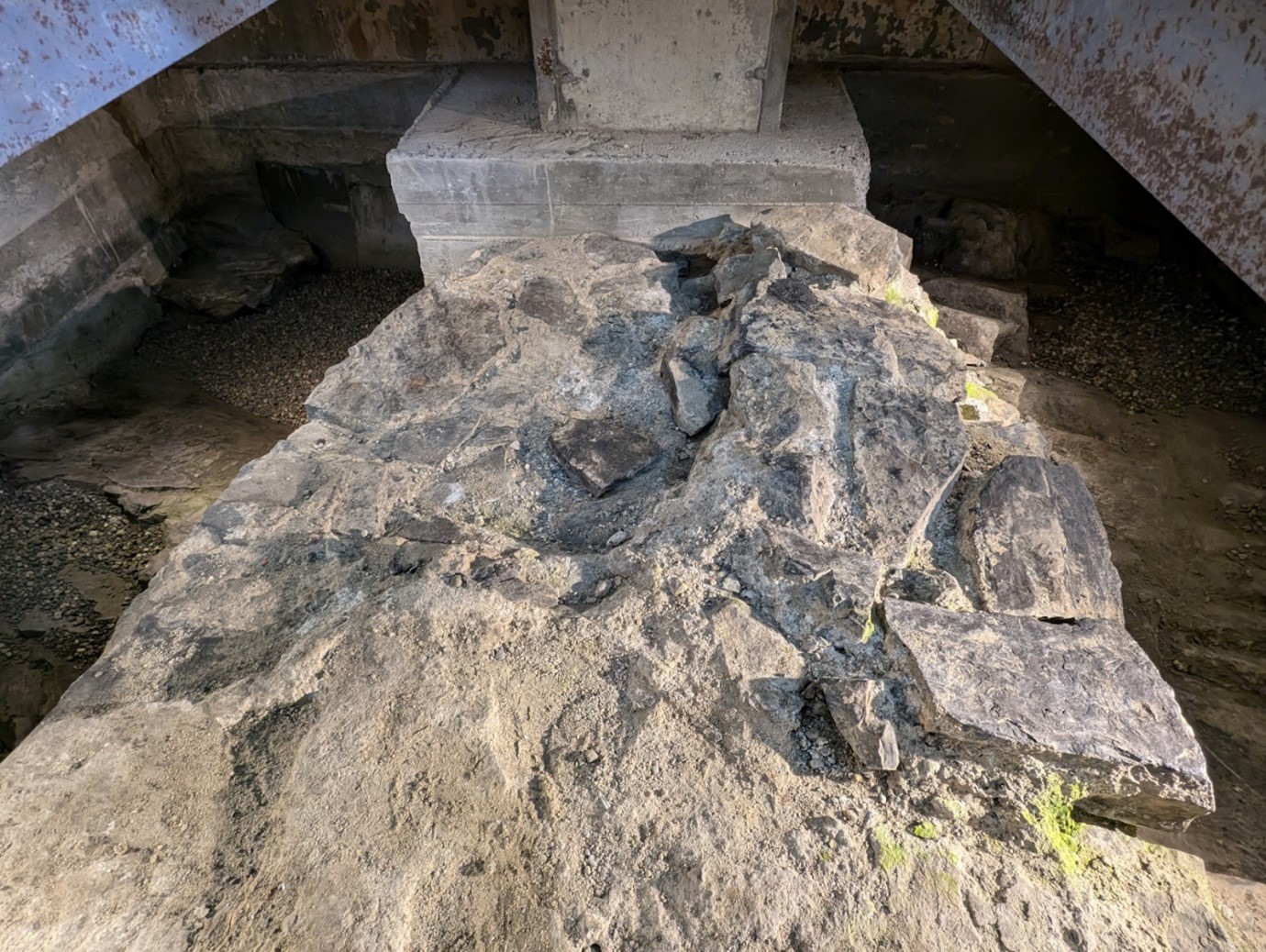
Photo: Remnants of the foundations of the first convent at Aux Trois Couvents. Courtesy of Aux Trois Couvents.
This story is hidden within the foundations of Aux Trois Couvents, a museum that stands on the site of three convent schools, with the first being built in 1694. Nuns at the convent were responsible for teaching young girls, but when British officer James Wolfe arrived with his troops in 1759, the convent was evacuated to Montreal. Château-Richer was occupied from August 28th to 31st, and Wolfe’s army sheltered in the convent and church.
According to 19th century oral tradition, the priest of Château-Richer hid in the woods with villagers and asked two young men to venture down to the village and bring back any news. The two boys moved toward the seemingly abandoned convent, and opened the door to find themselves face to face with more than a dozen Scottish highlanders who pointed muskets at the boys and demanded their surrender. The boys ran away, making it safely (though exhausted and shocked) to their hiding place in the woods. Later, one of the boys became a militia lieutenant under British rule and even met, so the story goes, with one of the Highlanders who reminisced that he’d intended to question the two youths, but that their speedy flight afforded the soldiers a good laugh.
On August 31st, the final day of the army’s occupation of Château-Richer, the Highlanders were ordered to burn the village and the convent, but not the church. The convent’s ruins stood for decades, brooding over the riverbank of the St. Lawrence. In 1830, a second convent was built on the same stone foundations used for the first convent. In today’s museum, the stone foundations of the convent burned down in 1759 are still visible for visitors.
See the foundations for yourself and learn more about the history of Château-Richer. Plan your visit by visiting their website: https://auxtroiscouvents.org/

